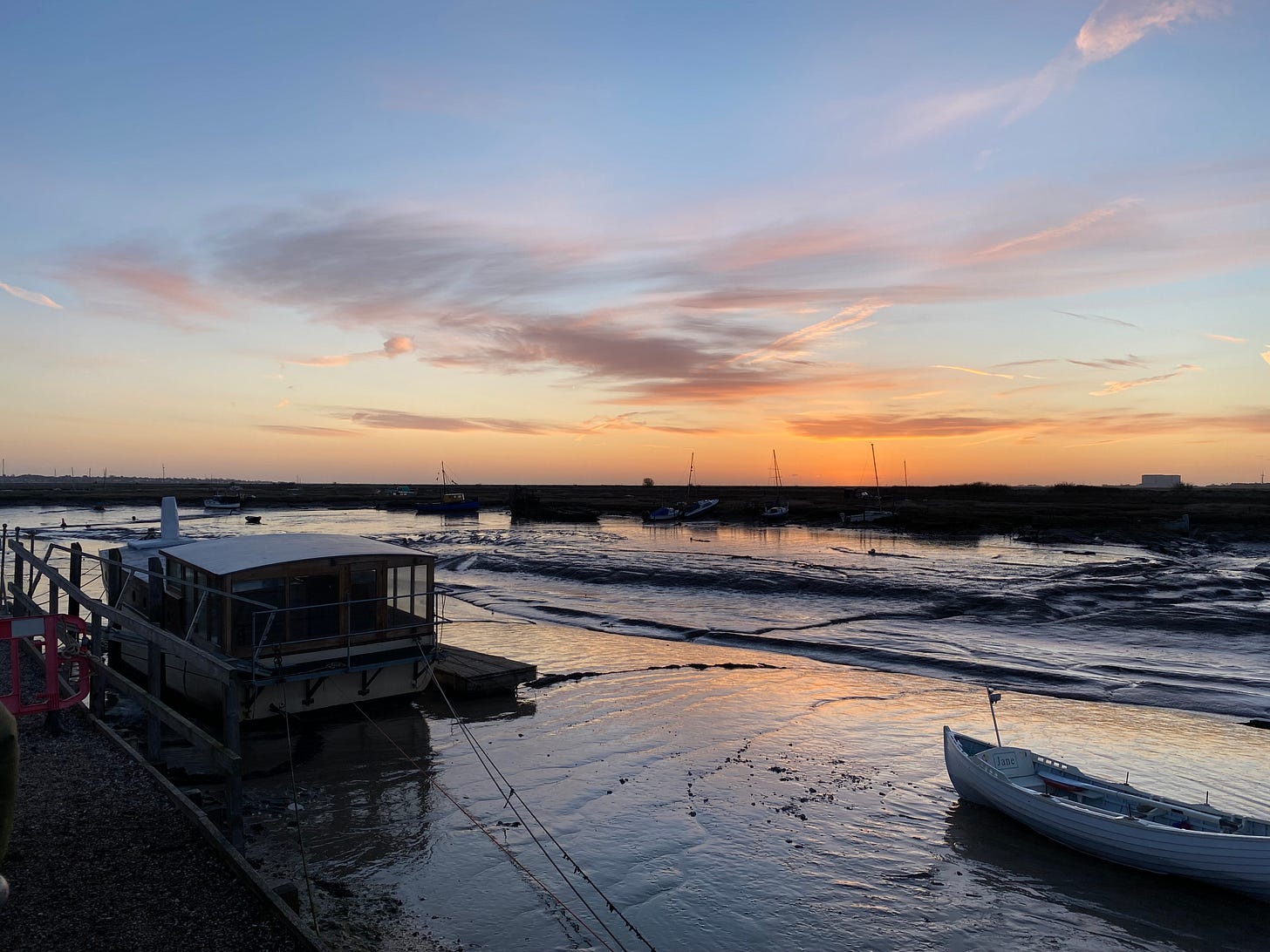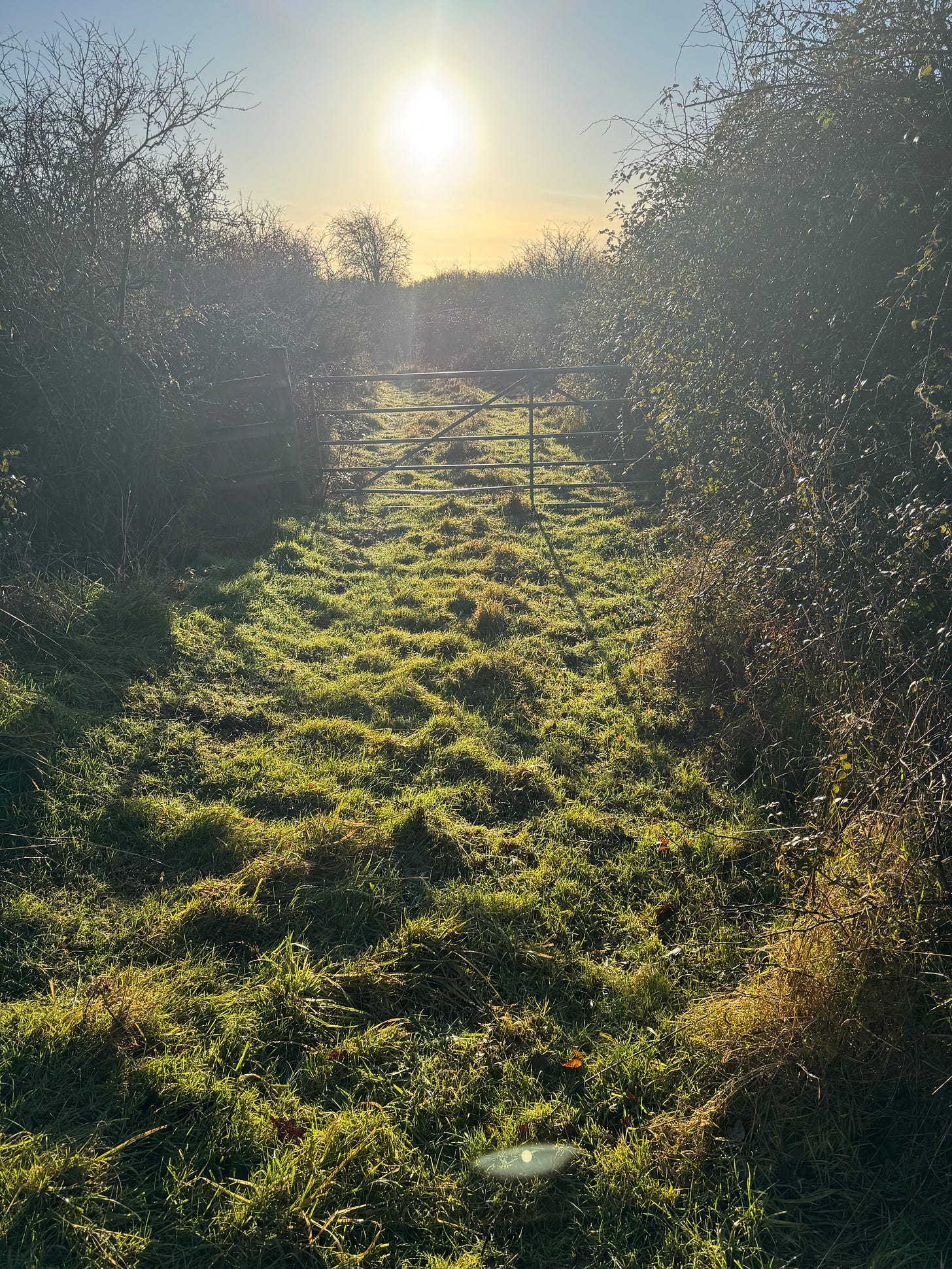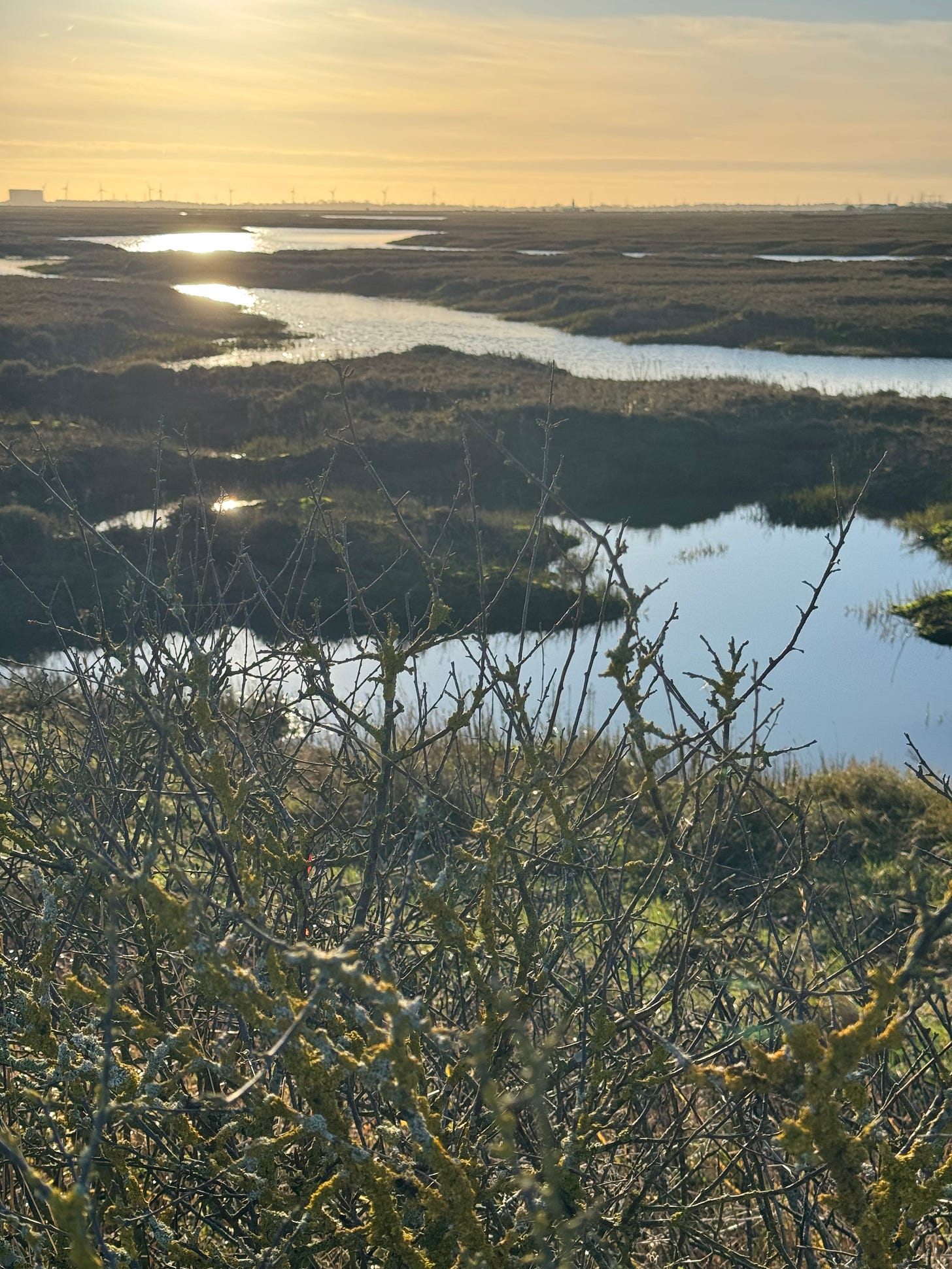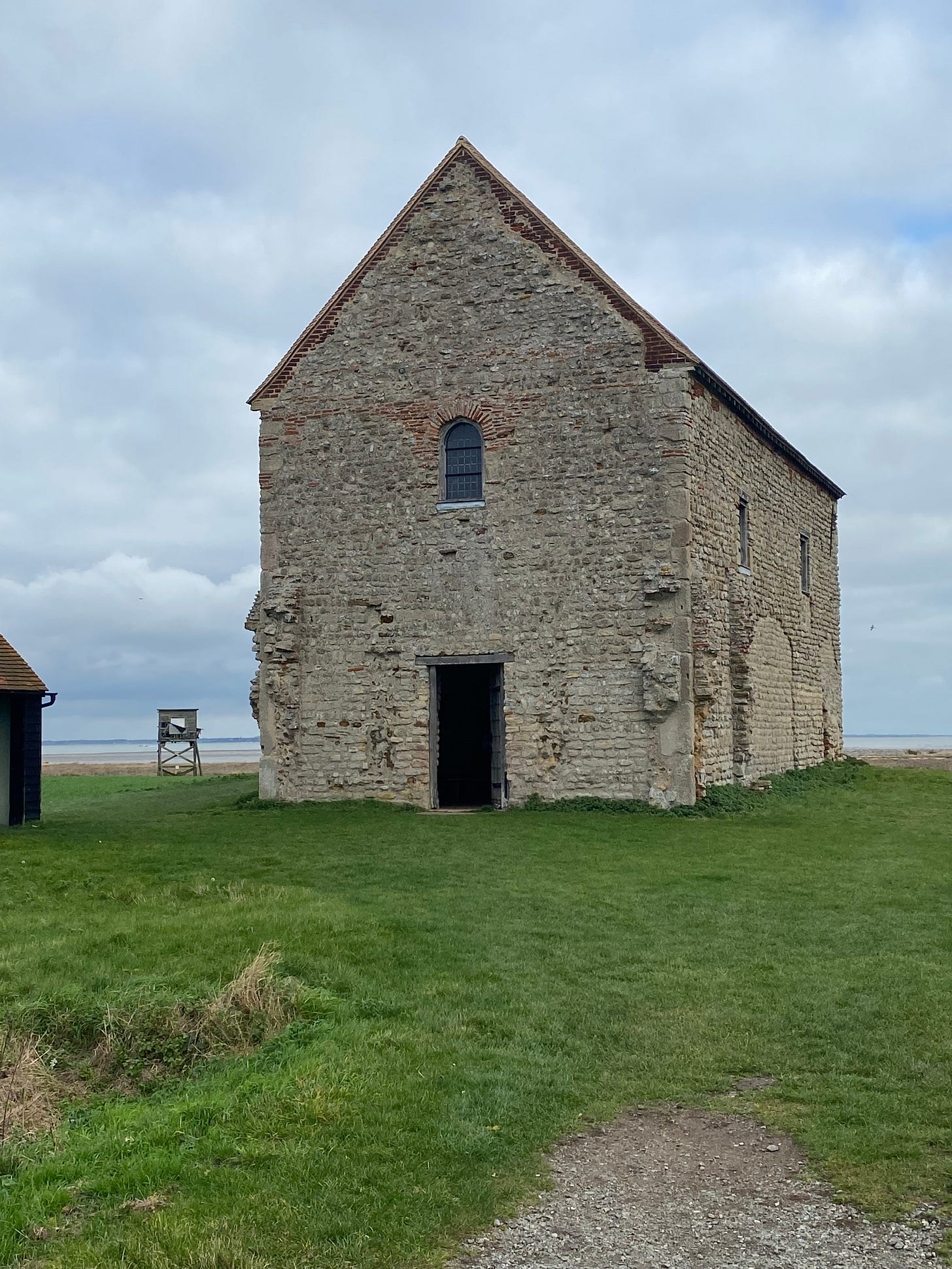This is the first in an occasional series on rewilded spots along the Essex coast and Thames Estuary and what they mean to me.
“What do you want for your birthday?” asked Corinne late last summer.
I replied: “A wet and windy winter’s weekend on the Essex Marshes”.
There was, as they say, method in my madness.
That coastline was where we’d spent an awful lot of time walking between lockdowns (see earlier post: ‘The only (fly)way is Essex’).
I had also been captivated by Sarah Perry’s ‘Essex Serpent’ during the pandemic, set there in late Victorian times.
The heroine Cora Seabourne, played by Clare Danes in a more than creditable Apple TV adaptation, had left London to make it her mission to rid the locals of their superstitions around sea monsters and demons lurking in the marshes.
And in every episode the weather was awful and inhospitable and for me, inspirational. That hint of menace is one of the many aspects of the Essex Marshes that draws me back time after time.
By contrast, an easy destination for our weekly walks out of London is the South Downs National Park, easy peasy to get to by train. Bucolic and safe.
Essex is not a county that you could say ‘plays it safe’.
Robert McFarlane in his book ‘The Old Ways’ has a chapter describing ‘the deadliest path in Britain’. It was no surprise to me to learn that it is in Essex.
The Broomway is a public footpath that heads straight out to sea just north of Southend, curling back to shore three miles to the north on the ominously named ‘Foulness Island’
It is thought to have killed more than a hundred people over the years. Fog had disoriented them, tides had rushed in on them or the night had fooled them. More than once, in the stories I ready about the Broomway, the twinkling lights of the Kent coast opposite would get mistaken for home and the doomed local would walk straight out to sea.
So why not give it a go, I thought.
It took some time but I eventually persuaded Corinne that we could walk the Broomway with a local guide who had knowledge of the tides.
We lived to tell the tale but it all added to the frisson I associate with the Essex coastline.
For my birthday weekend we chose the self same area that the Essex Serpent had been shot in, around Tollesbury, the self-described ‘village of the plough and sail’.
Old Hall Marshes had often called to us during my Essex lockdown years. Its nearly 2,000 acres were formerly divided up into plots for tenant farmers who grazed sheep and cattle. The RSPB (Royal Society for the Protection of Birds) bought it up in 1984 to return it to its salt marsh wilderness.
By the car park entrance there were a handful of holiday cottages that had always caught our eye.
“We must stay there one day”, we said to each other every time we passed.
When Corinne contacted the owner with my birthday criteria, a weekend in January was recommended to us. It was certainly an unusual request to seek out the worst weather possible but the owner would see what she could do.
When we arrived there that Friday evening it was already dark. The signs were promising. The wind was getting up and squalls of rain were hammering at the windows.
To further get ourselves into the mood we tuned in to that day’s ‘Shipping Forecast’.
BBC Radio 4 had recently held a day-long celebration of its 100th birthday on New Year’s Eve so it was top of mind for me.
For those of you not from these islands, this is a programme lasting nine minutes, broadcast three times a day. It warns those about to take to the sea of the weather conditions they can expect employing a series of names and terms that are engraved onto the national consciousness.
The Shipping Forecast has gone far beyond its original aim of keeping people safe at sea. Indeed it has been largely supplanted by digital technology as you might expect by now. But the Shipping Forecast lives on as a cultural phenomenon for us Brits, a soporific sleep aid and even a source of poetry and song.
Listening to its birthday celebration I realised it is one of the things that helps define us as an island race, verbally and spatially. In just a few minutes it makes a whistle-stop tour of the coastline of the British Isles surrounded by water, and not always hospitable water at that.
That Friday night in January, the Shipping Forecast was sounding very promising indeed. Storm Eowyn was battering the coast of Ireland and Scotland and the advice was that we should gird our loins in Essex as we were going to get caught up in its back-wash.
We went to bed that night with the anticipation that we would get the wild wet weekend that I had come looking for.
Pulling back the curtains that Saturday morning however, there was a glorious sunrise.
Out on the marsh we saw as many birds in terms of sheer volume as I’d seen in one place in my life. Sure I had been on trips with experienced birdwatchers when a long list of species had been ticked off. But the sheer number over-wintering on the marshes that day was astounding.
Those who had come south from colder climes like Iceland for relative warmth (it was just above freezing that day) included Brent and Greylag Geese, Teal, Wigeon, Shelduck, Redshank and Dunlin. Others had come down to the coast from the uplands for the winter like curlew and lapwing.
It was indeed a birthday treat despite the stunning weather.
The second day we walked round Essex Wildlife Trust’s ‘Tollesbury Wick’. I must confess that morning was closer to what the doctor had ordered.
A biting easterly was whistling across from Scandinavia and the Low Countries.
The sky was the colour of slate.
The views out to the de-commissioned nuclear power plant at Bradwell were stunning.
They had ‘the look of empty tombs where giants have been buried’ according to Sarah Perry, that self-same author and chronicler of Essex.
You could even see the Chapel of St Peter-on-the-Wall beyond, established in 653 by Cedd a missionary sent from the Holy Island of Lindisfarne and built on the ruins of an old Roman fort.
It is one of the oldest churches in England and certainly one of the most remote.
On the way home, I realised that by setting the weather up to be awful we had won both ways round for my birthday treat.
There may be no sea monsters and demons lurking there, as far as I could tell. But the Essex coastline still had me in its spell.











Sorry to hear it went so well. Wishing you a fouler ness next time.